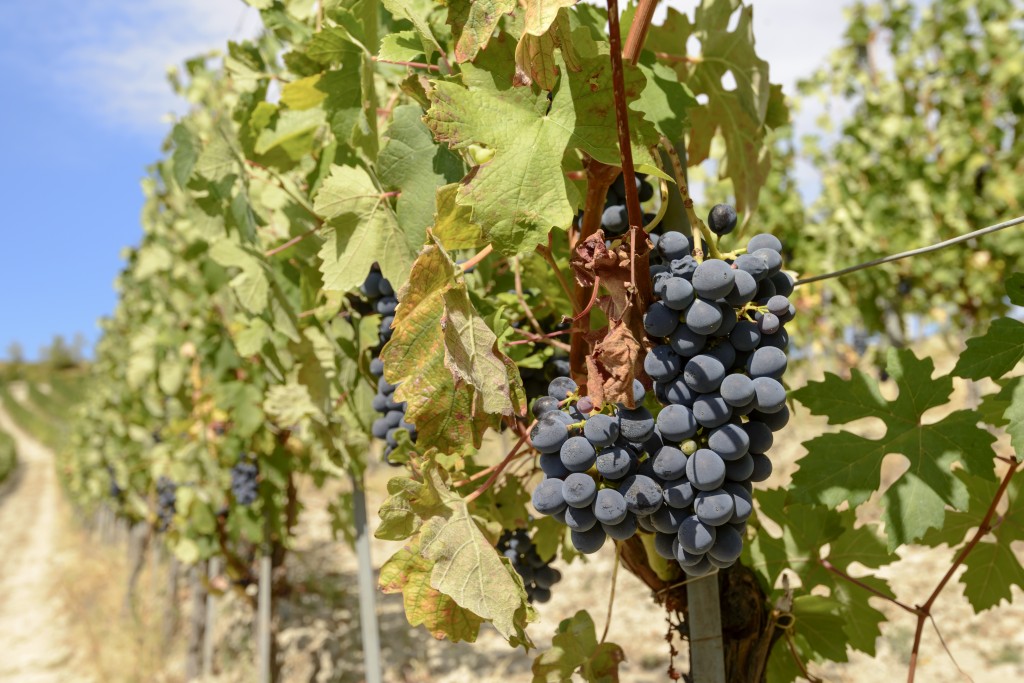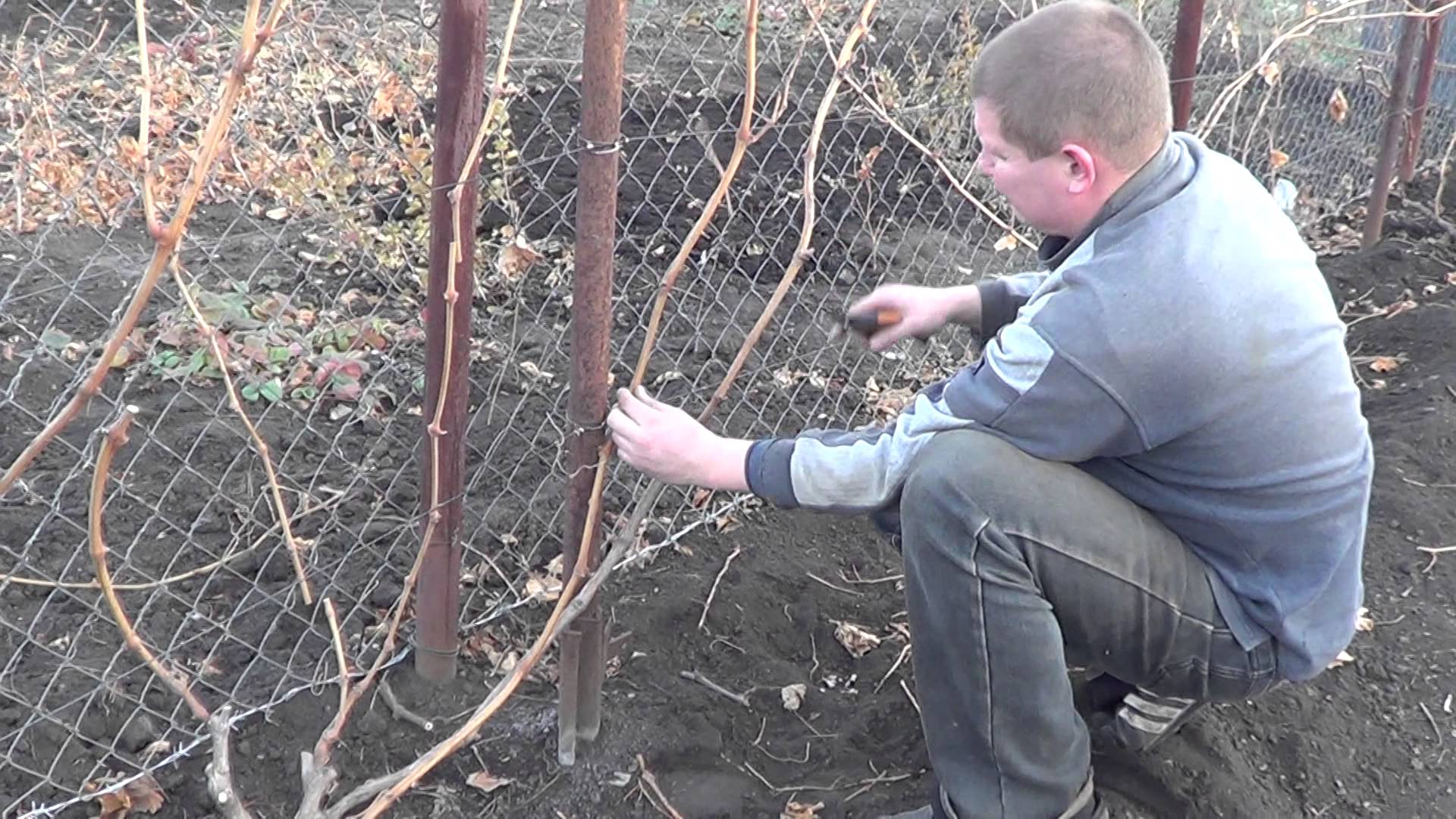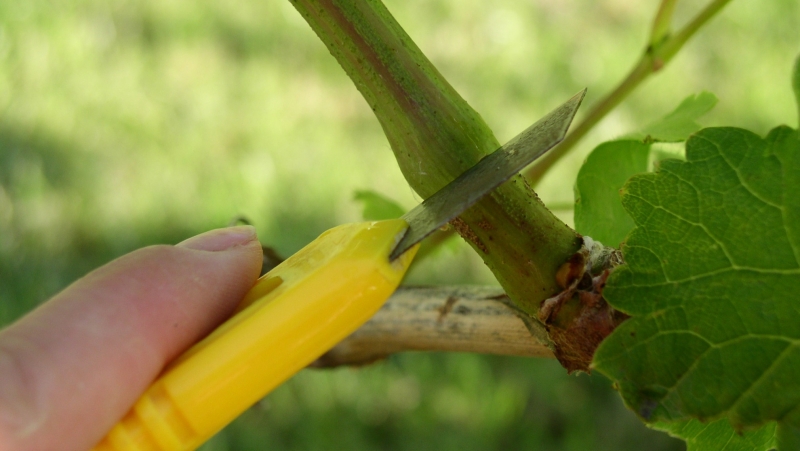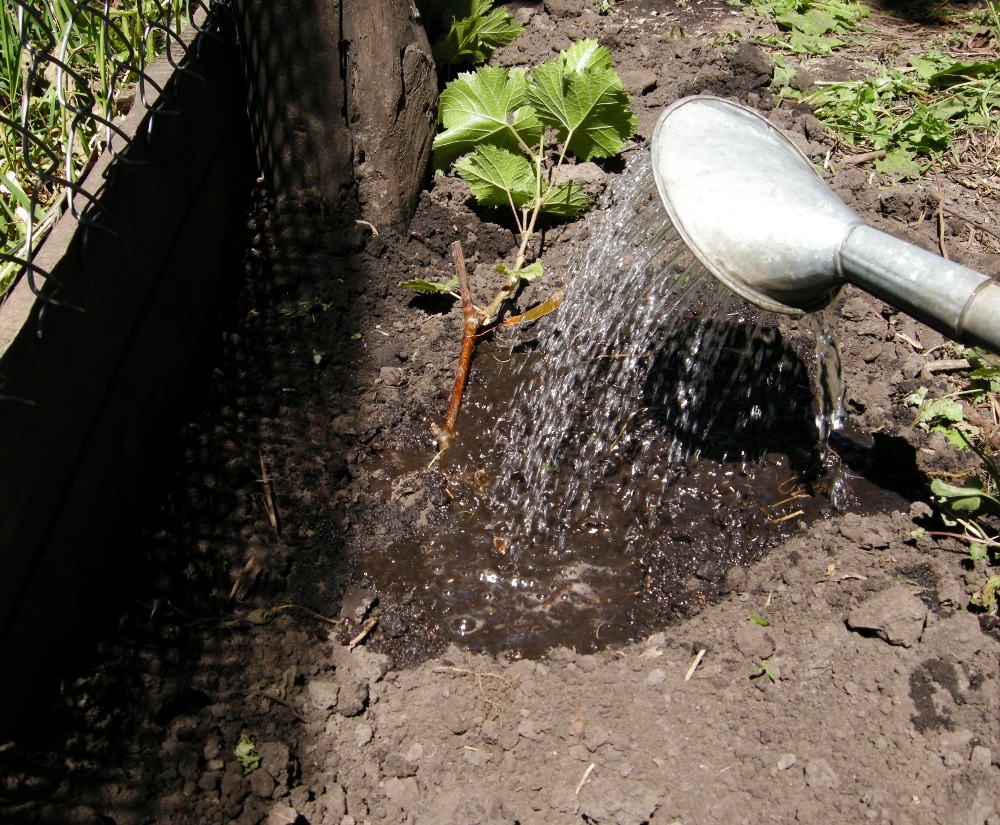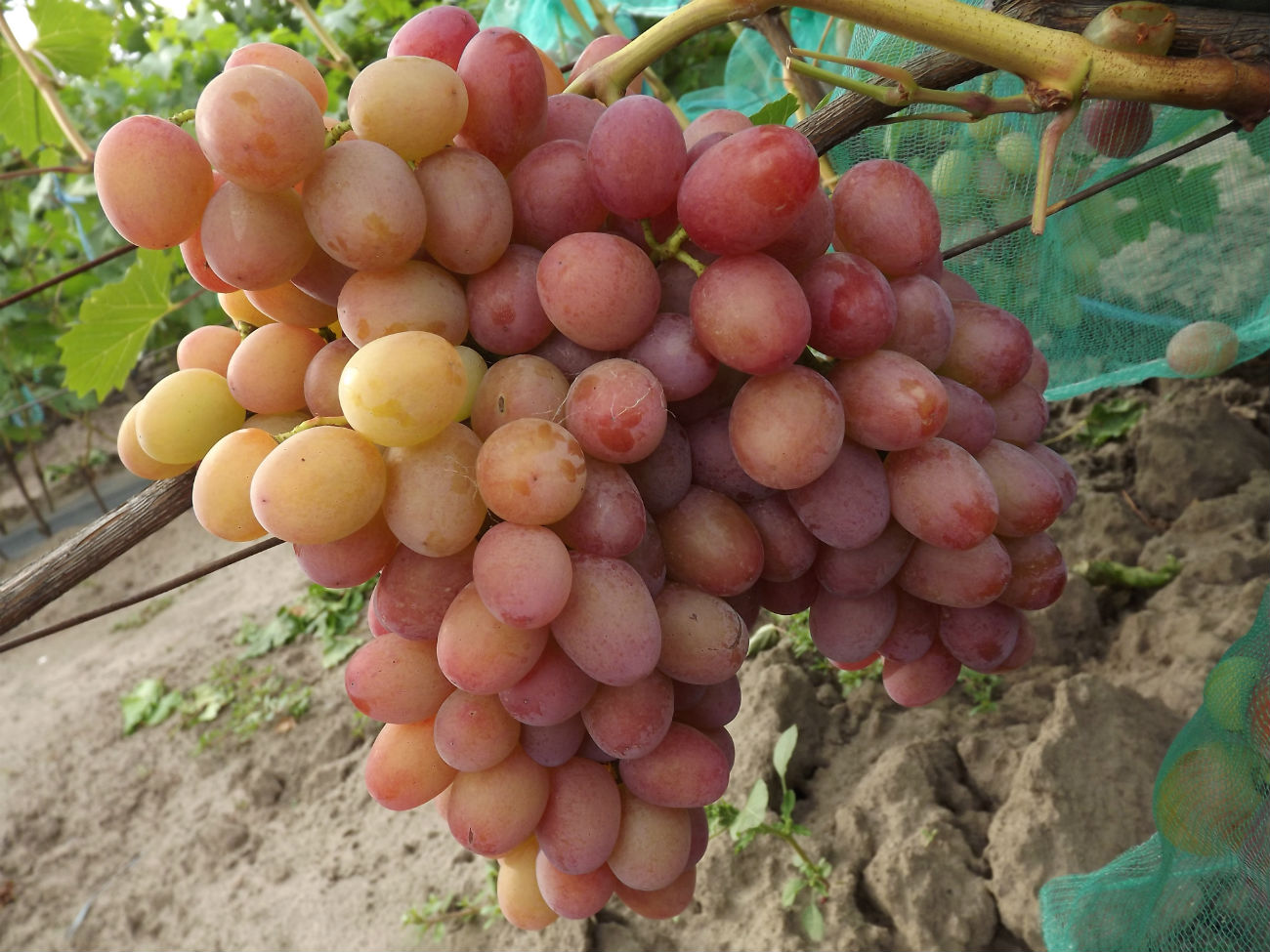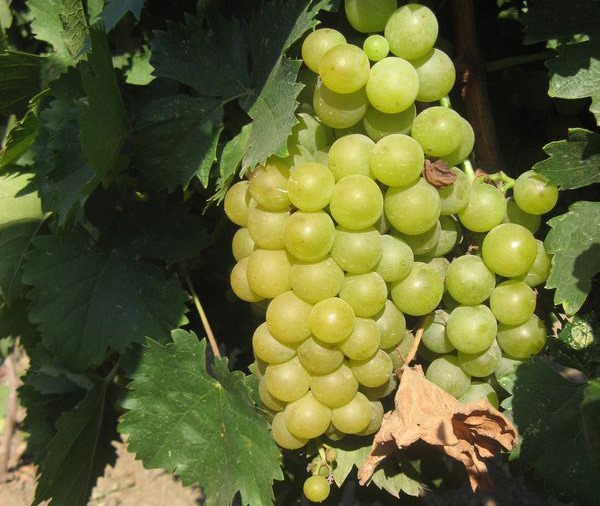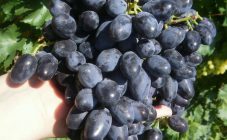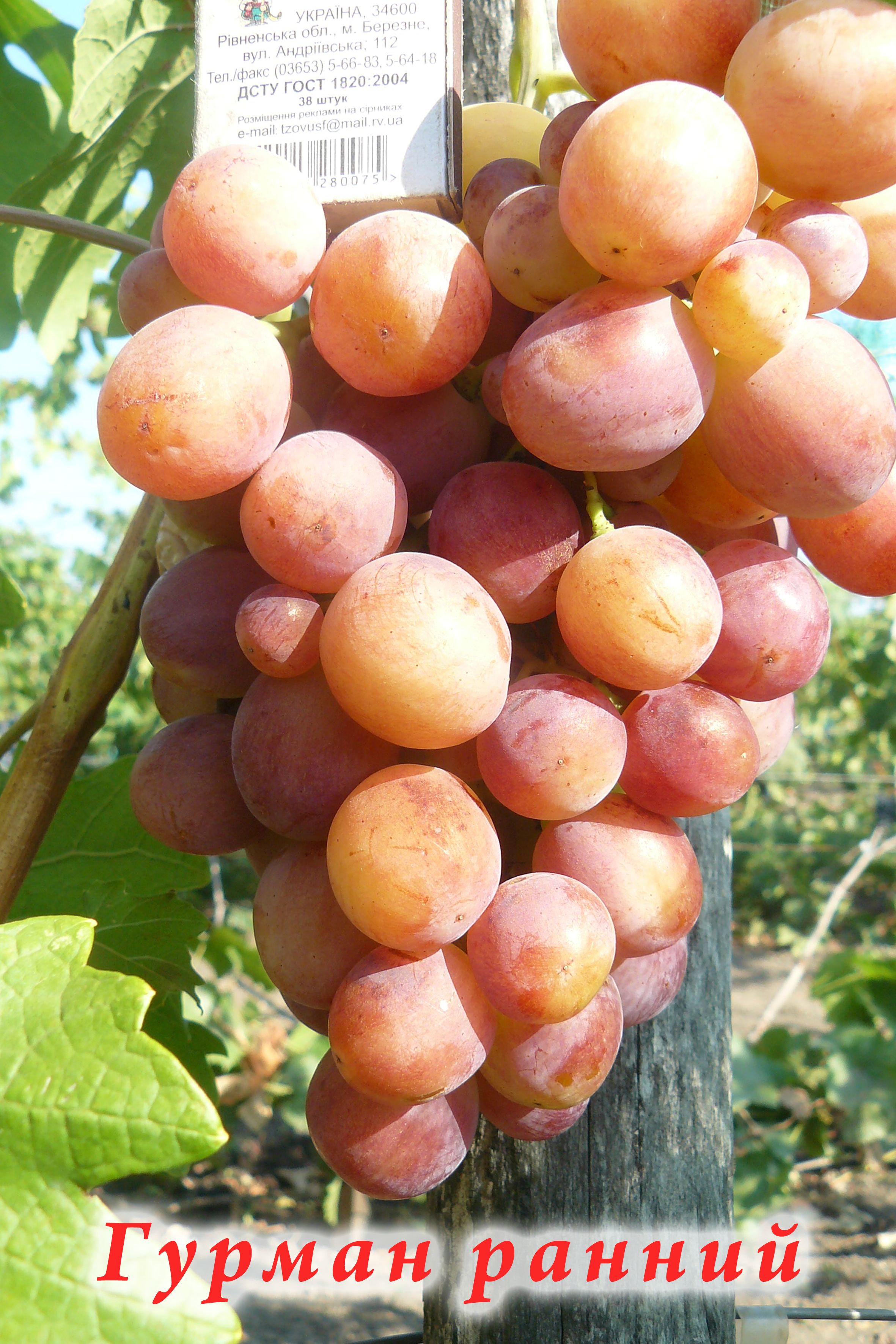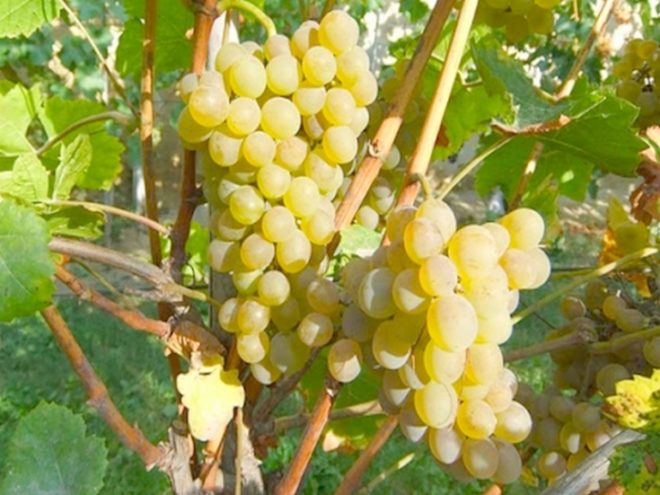Content:
Recently, a variety of technical grapes, well adapted to the weather conditions of the middle zone, has spread in Russia. This variety is popularly called Mukuzani. Winemakers claim that only such varieties can produce wine with unique properties.
A bit of history
It got its name from the Georgian wine "Mukuzani", which is made from Separavi grapes. This grape appeared in the vastness of Russia quite recently. Its first breeders were Georgian winegrowers. He was found by chance in a small Georgian village, in the valley of Kakheti. Due to its unique qualities, this variety gradually reached the Saratov and Voronezh regions and confidently moves further north.
A wine drink made from this grape is gaining more and more popularity among the residents of Russia. Although it is a wine grape, it is quite sweet and has a rich flavor. The specific grape aroma of Mukuzani spreads around the vine from the beginning of flowering until the very harvest.
Description of the Voronezh grape variety Mukuzani
Strictly speaking, it cannot be called a variety. The fact is that he did not pass the state test and is not in the official register. However, this grape variety does exist. There are a number of characteristics that set it apart from others.
Features inherent only to him:
- The grape leaf has a round shape, its color is dark green. Deep excisions are visible over the entire surface of the leaf. The foliage has three or five lobes.
- Shoots of this variety develop very actively and up to three clusters can form on each of them. Usually conical, but sometimes cylindrical. The structure of the bunch is very dense. The average length is 30 cm.
- The yield of this variety is impressive, and the maturation of the vine is excellent. The berries of just one bush are enough to produce 50 liters of juice or wine.
- The size of the berries is quite small, but this is a distinctive feature of all wine varieties. Their color is dark purple, sometimes black.
- The sugar content can reach 22% or more.
- The grape bush consists of individual arms. Each sleeve has one fruit arrow
- The juiciness of the pulp meets the standards of the wine grape variety and is 80-86 percent.
The variety is unique in that it can withstand severe frosts and does not require insulation. The most striking thing is that after a harsh winter, the yield of this variety does not fall, and sometimes even becomes higher. It has been experimentally proven that this grape can withstand frosts down to -30 degrees Celsius.
Features of agricultural technology
It is difficult to imagine a better grape variety for the Voronezh region than Mukuzani. However, if desired, it can be grown in the more northern regions of Russia. To do this, you will have to compensate for the not very suitable climate with rich, fertile soil. Caring for grapes of this variety is not much different from how they look after other varieties that do not require shelter.
Disembarkation
For grapes, a soil with neutral acidity will be optimal.Previously, it is necessary to add complex mineral fertilizers to it. Two weeks before the seedlings find their permanent place in the ground, they must dig it up, get rid of the weeds and destroy the larvae of all insects. For planting cuttings, you need to pick up a warm spring day, so that the first period of plant adaptation takes place in mid-spring.
Two to three days before planting in the ground, the seedlings stop watering so that a clod of earth forms around the cutting. In a trench that has been prepared in advance, planting holes are made with a diameter of 30 cm and a depth of 25-30 cm. At the bottom of the hole, fragments of red brick are placed, or just lumps of clay. From above, a mound is covered with fertile soil, mixed with fine sand. The plant, together with a lump of earth, is placed on a mound. Before filling the planting hole, a handful of ash is placed in the root area. The hole is covered up to the second eye of the cutting. Planting is completed with abundant watering.
Pruning
Mukuzani grapes need regular thinning of the bushes and cutting off excess shoots. If this is not done in time, the berries will most likely not fully ripen, and the development of the vine will be uneven. Spring pruning of uncovered grape varieties is carried out in the first or second decade of March, depending on the length of winter. This operation must be done before the kidneys swell and intensive sap flow begins. During the winter, some shoots freeze and must be removed.
In the fall, the vine is pruned so that it is better prepared for winter.
Breaking off
First of all, they break off underdeveloped shoots growing from below. Double and triple shoots are also subject to removal. The most developed shoots remain and thanks to them the subsequent rejuvenation of the bush occurs. This operation, along with pinching, allows you to regulate the future harvest.
Topping
To prevent the plant from stretching in length, the tops of the green shoots are removed. As a result of this operation, the main flow of nutrients will be directed to the inflorescences. This should be done two to three times before flowering.
Weeding
In order for the vineyard to develop normally, it needs to be weeded regularly. There should be no weeds and extra plants near the vineyard that feed on grape juice. The top of the soil can be periodically replaced with new, more nutritious soil.
Pest control
Vineyard protection from pests should be carried out systematically, regardless of whether the plants are insects or not. Moreover, this should be done before the flowering period.
Currently, there are few diseases and pests in the northern regions of Russia. Mainly northern vineyards suffer from powdery mildew (powdery mildew). Those who want to get an ecologically clean harvest can be advised to use biological products instead of "chemistry". Russian growers treat oidium with ten percent mullein infusion. In the United States, a new method has recently been developed to combat this ailment, which involves the use of a milk whey solution.
Watering the grapes
The amount of watering will depend on the weather. If by the end of spring the land is dry, and frosts are not expected in the near future, then at this time the first watering should be carried out. The vine must first be tied to the lower trellis. The Mukuzani variety requires the same watering as most industrial varieties. Experienced gardeners, young vines, up to three years old, are watered not superficially, but through pipes that are dug between the bushes.
Approximate watering times:
- The first time you need to water abundantly. It will be good to dissolve dry ash in water.4 buckets of water with 0.5 liters are poured under the bush. ash.
- The second time the vineyard is watered a week before flowering.
- Watering during flowering is not only pointless, but also harmful. Abundant moisture during this period leads to a massive discharge of the flower and the berry does not have time to set.
- After flowering, again if the land is dry, a third watering will be necessary.
- As soon as the grapes begin to gain color, it is no longer necessary to water it. Waterlogging of the vineyard can lead to the fact that many of the fruits will be unripe.
- The fourth, mandatory watering for all grape varieties, is done in late autumn. It is obligatory for the reason that the charge of moisture in the soil makes it easier for the plant to endure the harsh winter.
Many gardeners grow this variety solely for decorating a house or gazebo. In this case, you don't have to think too much about where to plant it - it will grow on any soil and will not need additional care. It is enough to cut the vine once a year and plant it in new places. Pruning is needed to maintain the shape of the crown. Shoots for the winter are usually not covered, but in order to save the vine from pests and fungal diseases, they are collected together and then bent down.
The undoubted advantages of such a variety of grapes as Mukuzani include:
- frost resistance, which allows you to grow grapes without shelter;
- high productivity;
- unpretentious care - even a novice amateur gardener can cope with its cultivation;
- and finally, a wonderful wine can be made from it.
The dark burgundy color of the drink, with a characteristic purple hue, is difficult to confuse with another. This wine has won prizes at tastings more than once.
It seems that this variety has no pronounced disadvantages. It is difficult to find a more suitable variety for the Middle Lane. The disadvantages can be attributed, unless the fact that its varietal feature is the small size of the berry. But you need to understand that this is a characteristic feature of all technical grape varieties.

